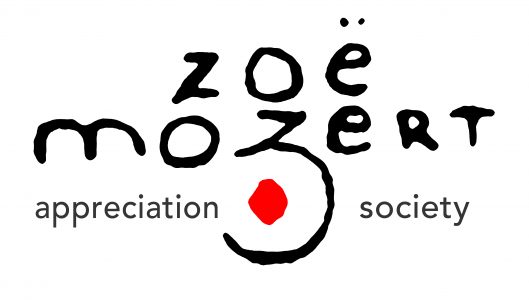In my earliest research into Zoë Mozert and pin-up Mutoscope cards, I was surprised to come across dozens and dozens of examples of pin-ups in the act of painting, posed with palette and easel. While pin-up artists were undoubtedly skilled at sexualizing almost any scenario, this repeated motif of the female painter– often depicted by male artists– can perhaps offer us a window into attitudes about the art world, female creativity, and practices of looking and being seen. In the coming weeks and months, I’ll share some of the images from my ever-growing files.

One of the most popular pictures– reproduced in a variety of formats– seems to have been Gil Elvgren’s Palette-Able, published by St. Paul, Minnesota-based Louis F. Dow around 1937. Here, a demure brunette wearing a voluminous black smock perches on a stool, holding an enormous palette–and our gaze. Her stereotypical beret is akimbo, and she hooks one of her high heels on a stretcher of the stool, crossing her legs to reveal stockings and a garter whose red bow matches the one at her neck and the ones adorning her shoes. Although her paintbrush is seemingly doused with red paint that matches the color of her lips and bows, poised to make a mark, there is no easel in front of her. We can thus imagine her either perpetually frustrated, unable to put paint to canvas, or with the card we hold acting as the implied surface on which she has painted.

Elvgren’s illustration was nationally distributed in a variety of formats, from the large pin-up above (approximately 8×10 inches) to tiny matchbooks whose scale and printing quality often leaves the artist-model’s features mis-registered and off-center.

Gil Elvgren’s Palette-Able as reproduced for “32 Inter-Collegiate Pin-Up Girls,” Kansas City, MO- eBay 
Elvgren’s “Palette-Able” Mutoscope card (eBay)
In an era in which few female artists were publicly visible or included in the art historical canon, perhaps Elvgren’s rendering of such a figure did indeed make the idea of a woman who paints “palette-able”– “just a little Pin-up girl,” as the poem on this Louis Dow booklet proclaimed.

Zoë Mozert’s self-presentation is a complicated engagement with this tradition. Does she subvert the trope or reinforce it? In the preparatory photograph, Mozert’s palette is blank, reflecting the lights of the studio.

Zoë Mozert, I Must Learn Where to Draw the Line, studio photograph and Mutoscope card, 1940s.
In reality, Mozert created her works with oil pastels, a tactile medium that she often manipulated with her fingers in a somewhat messy process (I’ll explore her process more in a future post). This medium was frequently employed by popular illustrators. By representing herself with paintbrush and palette, Mozert aligned herself with the realm of the fine arts, rather than depicting herself with the actual tools of her trade– suggesting some tensions between the worlds of illustration and “high” art.


One thought on “Painting Pin-Ups”